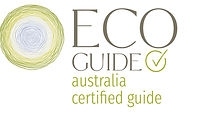Arid - Zone water consumption ... for humans!
- cameltreksaustralia
- Feb 9, 2015
- 4 min read
When we are out on camel treks with guests I keep my eye on many things. It's our responsibility to ensure guests saftey and comfort. I've been thanked by numerous guests last year for encouraging them to drink ... yes drink water.
I think in general people don't drink enough water, especially when we are outdoors expending energy and the need for water increases considerably.
Last year I meet the worst case of a poor drinker; she surprised me by affirming her liquid intake was a strong coffee in the morning and then another in the evening followed by white wine and, occasionally she added fizzy drinks like diet cola during the day ... but no water because drinking water made her feel sick. I questioned her and she confirmed that she'd be fine not to drink during the day as this was her normal routine. I could feel a new role coming to life, 'police water woman'.
I had already assisted her towards the end of Day 1 and she needed pain releif medication for a headache before the evening meal. Okay, so I had to encourage this woman to drink water ... I didn't fancy a trip to hospital, nor was I happy with the idea of other guests being negatively effected by this one woman. The weather was warmer than expected 28 - 33 degrees and we were outside 100%, it was October.
So how much water should we consume? One of my favourite reads is, 'Your Body's Many Cries for Water' authored by F. Batmanghelidj M.D. He says your not sick, you're thirsty, don't treat thirst with medication. Certainly the above situation with the woman pulling up at the end of each day with severe headaches is a classic sign of a dehydrated body. However Batmanghelidj also suggests that body—chronic-dehydration is the root cause of many painful degenerative diseases, asthma, allergies, hypertension, excess body weight, and some emotional problems, including depression. The book explains the damaging effects of dehydration in the fourth dimension of time.
DESERT WATER CONSUMPTION
We have been following some extracts from the US Marine Corps guidelines for work under desert conditions. They are applicable to fit, healthy individuals and provide a general guide. The US refers to Gallons, Quarts & Miles.
1 US Gallon = 3.7854 litres
1 US Mile = 1.61km
1 Quart = 0.946 ( almost 1 litre )
They adhere to Naismith's Rule - he was a Scottish mountaineer in 1892 who taught fellow walkers to allow 2 gallons ( 7.57 litres ) of water for every 2o miles (32.2km) covered during the day. Let's say Camel Treks Australia does half of the miles, requiring half of the recommended water intake, that's still 3.78 litres per day of activity,( excluding rest periods ) and he was in Scotland, not an arid dry zone.
The US Marine Corps plan to use 2 quarts ( 1.89 litres ) of water per hour of hard work during the heat of the day. Our guests experience an enjoyable adventure, apposed to the nightmare of war and extreme effort, and we operate during the cooler months. The message is that drinking water is considered imperative to maintain homeostasis (life), and the US army enforce water consumption to the letter.
The signs of dehydration are not always obvious until a person is feeling unwell, one of my jobs on treks is to keep track of 'group water consumption' and provide some effective measures to prevent anyone experiencing dehydration.
So if you come on trek -
We drink in the morning upon waking, cordials are provided for guests that dislike plain water. The fire will be lit with the eco billy boiling,and we have lots of tea options and coffee later following breakfast.
We break for morning and afternoon tea with lots of drink options again. We top up guests water bottles at these rest breaks .. beware if your bottle is not needing a top up!
Some tips -
Start the day hydrated, drink water before a period of activity, this gets valuable water into the body before movement. Drink water before eating, the US Army troops are not allowed to eat unless they have plenty of water. Digestion requires water consumption.
We suggest purchasing a hydration back pack such as the popular CamelBak's that we use. It seems to be much easier to drink from a tube or straw, especially for children. These back packs have a tube within easy distance of your head / mouth area that connects with a bladder housed within the back pack. The water stays cooler in these bladders than in a stainless steel or plastic bottle. These packs are available at any good camping store and they definitely make regular drinking easy. We ask all guests to bring and carry a 1 - 1.5 litre drink water bottle unless they have a back pack as we do.
And what happened with the woman on trek who wouldn't drink water ... well we only had her company for four days. Was I able to encourage her to drink? NO! What did I end up having to do when on day three she was really struggling? I ended up getting staff to deliver in fizzy drink, diet cola to be precise! That was the only way I could get her sufficiently hydrated and maintain responsibility for her well being. We are after all running a camel trekking business not a health retreat.
I personally use a pure coconut hydration solution to maintain 'Happy days' - Karen







Comments